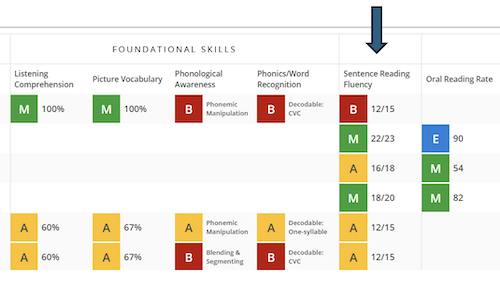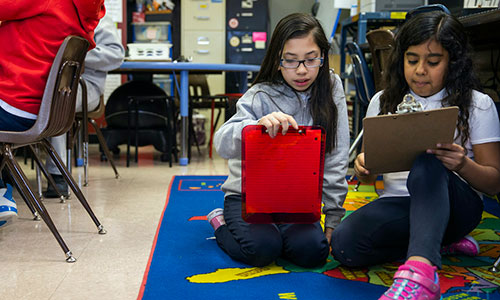
Special education teachers are an essential part of our nation’s ability to provide a free and appropriate public education to the approximately 7.5 million students with disabilities currently attending our public schools. That’s about 15% of all students. But it’s no secret that attrition for special education teachers remains particularly high, for many reasons. Federal data shows that over 20% of public schools reported they were not fully staffed in special education at the start of the 2023–24 school year, and over 50% of public schools reported they will need to fill positions in special education before the start of the next school year. That’s a lot of support needed for a lot of students. Unsurprisingly, other teachers have been stepping in to help. So we would like to do our part and share some helpful tips for general education teachers about assessment in special education.
Why is assessment in special education important?
General education teachers already have a powerful tool they can use, one they are very familiar with: assessment. Accurate, reliable assessment data can point the way and help general education teachers make impactful decisions to support students with disabilities.
A reliable, accurate assessment can help teachers evaluate what students have learned. The resulting data is also essential for determining if any instructional adjustments should be made, whether it’s for a whole class, a small group, or an individual student. But there are other ways assessment is used specifically for kids with disabilities:
Creating a “present levels of performance” statement
The Individuals with Disabilities Education Act (IDEA) requires that every individualized education plan (IEP) have a present levels of performance statement. This provides a detailed overview of a student’s current academic and functional abilities, including information on the student’s strengths, areas for improvement, and progress toward previous goals. It’s based on all the information and data previously collected and known about the child, including assessment data, and it serves as a baseline to set specific, measurable goals and determine the appropriate support and services the student will need.
An accurate picture of where the student currently stands in their educational journey helps educators and caregivers collaborate effectively to create a plan that addresses the student’s unique needs, promotes their academic and functional growth, and keeps them in the least restrictive environment (LRE). The present levels of performance statement has to be accurate and must be updated every year.
Identifying accommodations and/or modifications
Assessments for general education students are administered with the assumption that students are capable of showing what they know. But we can’t make this assumption for students with disabilities. For example, years ago, a student of mine who had difficulty with inferencing couldn’t understand the meaning of some of the questions on an assessment. She didn’t know what the questions were asking and spent hours on the test without making meaningful progress. Reliable assessment data can uncover areas like this where students may need more support. The data can make it easier to understand if new accommodations or modifications are required and should be included on the student’s IEP.
When thinking about accommodations for a student, ask yourself, does the data suggest a student could benefit from specific accommodations? For example, suppose you have a student who consistently has difficulty with reading comprehension on tests. You see this student’s scores are significantly lower in reading comprehension compared to their peers. And your classroom observations and formative assessments uncover that the student takes longer to read passages and often misses key details. Based on this assessment data, you might conclude that the student could benefit from extended time on tests or access to audiobooks during independent reading activities.
There are many possibilities for accommodations. “140+ IEP accommodations every special ed teacher should bookmark” is a great link to bookmark. You can find more great resources on the website for the National Association of School Psychologists.
Let’s look at another example if you’re considering whether a student needs an accommodation or a modification. Suppose you have a student who regularly struggles with problem-solving on math assignments and assessments. Your formative assessments tell you that the student has trouble completing problems and often makes errors in multistep calculations. Providing the student with fewer problems, or breaking complex problems into smaller, manageable steps—while ensuring the core concepts are still covered—is a modification that would benefit the student.
The website for the Parent Educational Advocacy Training Center (PEATC) lists many other possible modifications that can help you support the special education students in your general education classroom.
Showing progress on an IEP
Regularly keeping parents and other caregivers of students with disabilities in the loop about what’s going on in school is a great way to reduce any surprises at quarterly updates and annual IEP meetings. And accurate assessment data can be used when sharing great news about progress on the IEP outside of what’s required!
If your school tests with MAP® Growth™, our Family Toolkit can support you in collaborating with your students’ families.
Thank you!
All of us here at NWEA would like to say a heartfelt thank you to everyone who is working so hard to support students with disabilities and keep them moving forward. This student population tends to be one of our most vulnerable, and the work you do can make a real difference—every single day.






